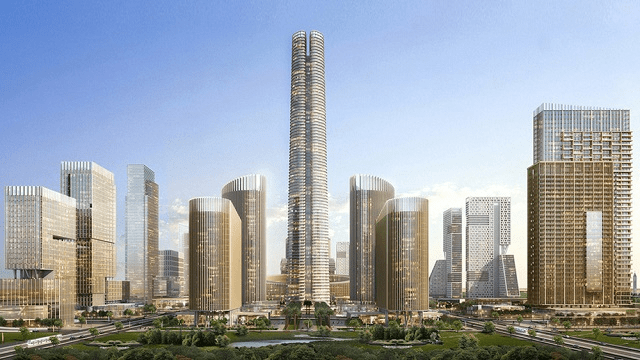Ethiopia is once again reaching for the sky, literally. In a move symbolizing its national ambition, the East African nation has revived plans to build what could soon be the tallest building in sub-Saharan Africa. With a $445 million price tag and a target height of 1,074 feet, this 62-story tower is set to become the new headquarters of Ethiopian Electric Power (EEP).
Designed by the prestigious global consulting firm Dar Al-Handasah, the skyscraper is more than just a record-breaking structure; it’s a symbol of Ethiopia’s push toward modernization and self-reliance. Once completed, it will surpass Johannesburg’s Leonardo tower, currently the tallest in sub-Saharan Africa at 768 feet.
Strategically placed in the Kirkos district, near Addis Ababa’s bustling central business district, the project covers a sprawling 2.8-hectare footprint. With over 2.1 million square feet of floor space, the tower is set to feature everything from high-tech office spaces to a rooftop sky garden and restaurant, merging business functionality with public engagement and leisure.

Originally announced in 2023, the skyscraper stalled due to financial complications. But as EEP reopens bidding, the vision stands firm. The utility giant is looking for construction partners with three or more major projects each valued at a minimum of $370 million under their belts, ensuring only the most capable firms handle this colossal task.
Set to be executed under an engineering, procurement, and construction (EPC) contract, the entire project is expected to be completed in four years. This method allows for a seamless process, consolidating design, material sourcing, and construction under a unified strategy. With Dar Al-Handasah at the design helm, expectations are high for both quality and innovation.
Beyond breaking records, the structure will redefine Addis Ababa’s cityscape and establish a new architectural benchmark in the region. It signals more than just vertical ambition; it’s a reflection of Ethiopia’s readiness to engage with global trends and compete economically and technologically.

The skyscraper also supports Ethiopia’s broader urban and economic development strategy, particularly in the energy sector. As the headquarters of EEP, it positions energy infrastructure as a cornerstone of national growth. But the inclusion of public spaces like the sky garden hints at a deeper, more integrated urban vision, one that values livability alongside functionality.
With tenders now open, the next phase hinges on securing the right construction partners. The stakes are high: the timeline is tight, the expectations immense, and the impact potentially transformative.


